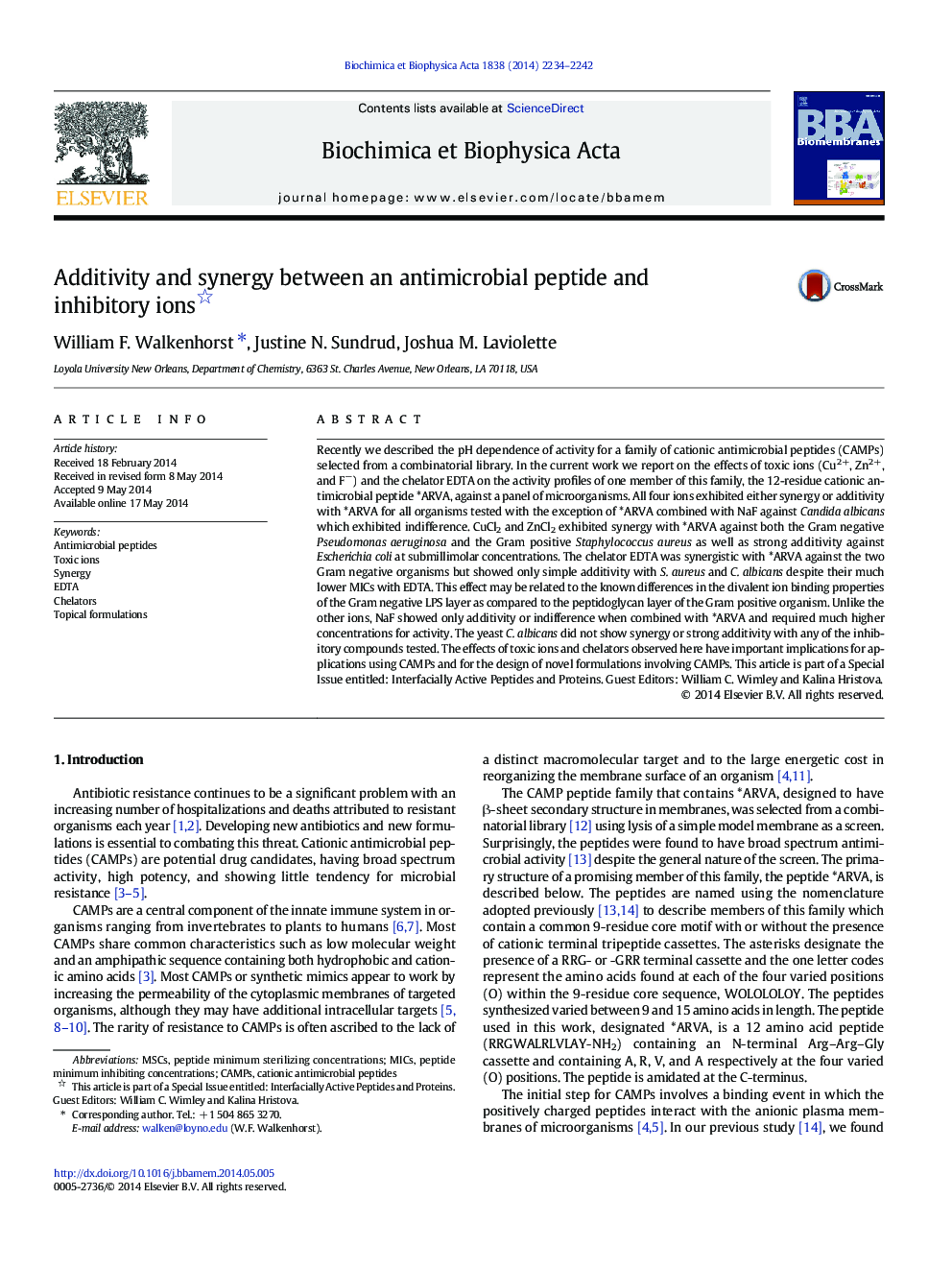| کد مقاله | کد نشریه | سال انتشار | مقاله انگلیسی | نسخه تمام متن |
|---|---|---|---|---|
| 1944181 | 1053188 | 2014 | 9 صفحه PDF | دانلود رایگان |

• Effect of toxic ions on antimicrobial peptide performance was investigated.
• Synergy and additivity between peptide and toxic ions Cu2 +, Zn2 +, F−, and EDTA
• Peptide concentration was submicromolar while most ions were submillimolar.
• Varying the initial ratios allows for lowering amounts of preferred compounds.
Recently we described the pH dependence of activity for a family of cationic antimicrobial peptides (CAMPs) selected from a combinatorial library. In the current work we report on the effects of toxic ions (Cu2+, Zn2+, and F−) and the chelator EDTA on the activity profiles of one member of this family, the 12-residue cationic antimicrobial peptide *ARVA, against a panel of microorganisms. All four ions exhibited either synergy or additivity with *ARVA for all organisms tested with the exception of *ARVA combined with NaF against Candida albicans which exhibited indifference. CuCl2 and ZnCl2 exhibited synergy with *ARVA against both the Gram negative Pseudomonas aeruginosa and the Gram positive Staphylococcus aureus as well as strong additivity against Escherichia coli at submillimolar concentrations. The chelator EDTA was synergistic with *ARVA against the two Gram negative organisms but showed only simple additivity with S. aureus and C. albicans despite their much lower MICs with EDTA. This effect may be related to the known differences in the divalent ion binding properties of the Gram negative LPS layer as compared to the peptidoglycan layer of the Gram positive organism. Unlike the other ions, NaF showed only additivity or indifference when combined with *ARVA and required much higher concentrations for activity. The yeast C. albicans did not show synergy or strong additivity with any of the inhibitory compounds tested. The effects of toxic ions and chelators observed here have important implications for applications using CAMPs and for the design of novel formulations involving CAMPs. This article is part of a Special Issue entitled: Interfacially Active Peptides and Proteins. Guest Editors: William C. Wimley and Kalina Hristova.
Figure optionsDownload high-quality image (49 K)Download as PowerPoint slide
Journal: Biochimica et Biophysica Acta (BBA) - Biomembranes - Volume 1838, Issue 9, September 2014, Pages 2234–2242